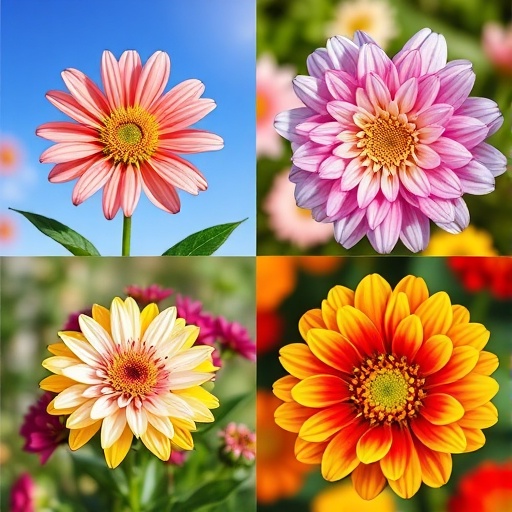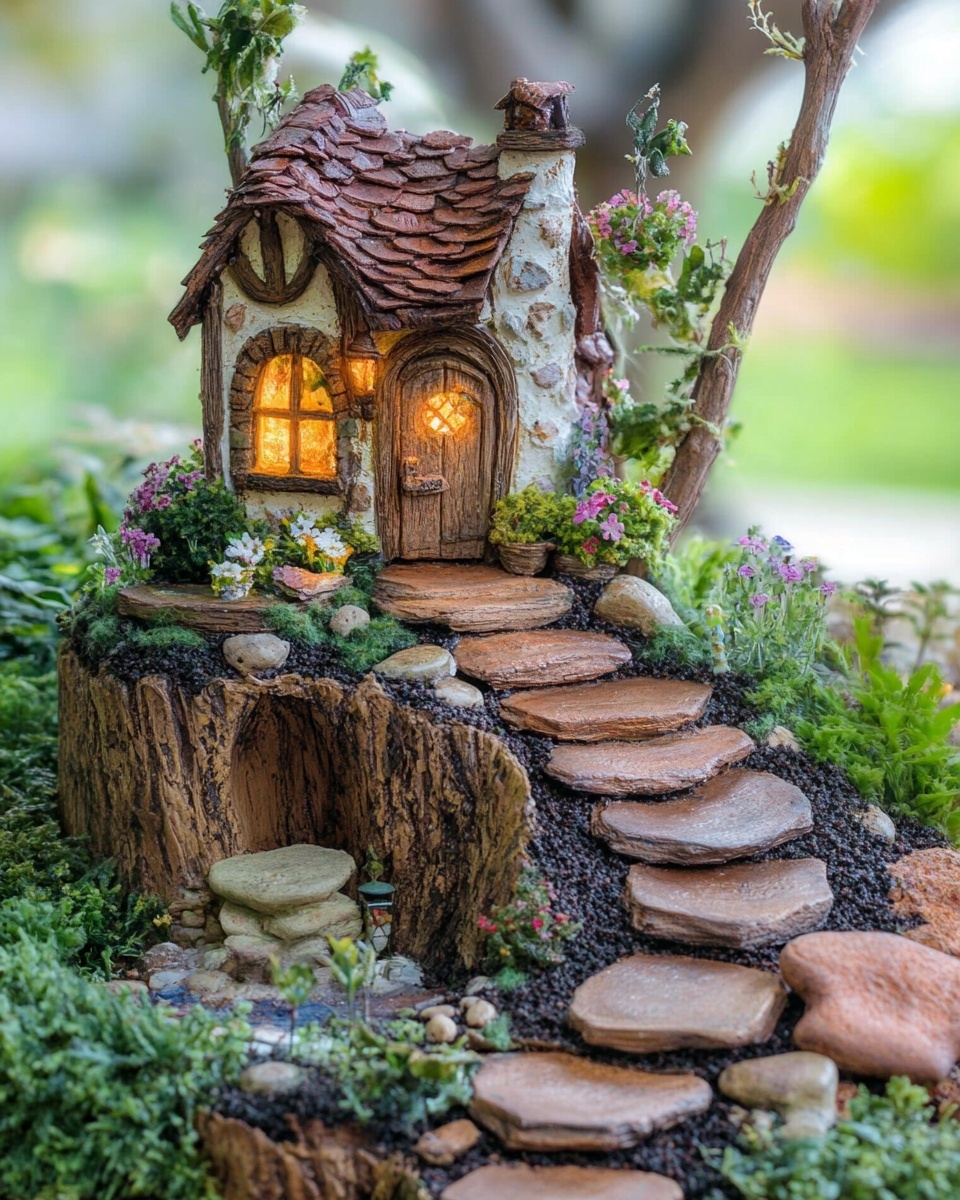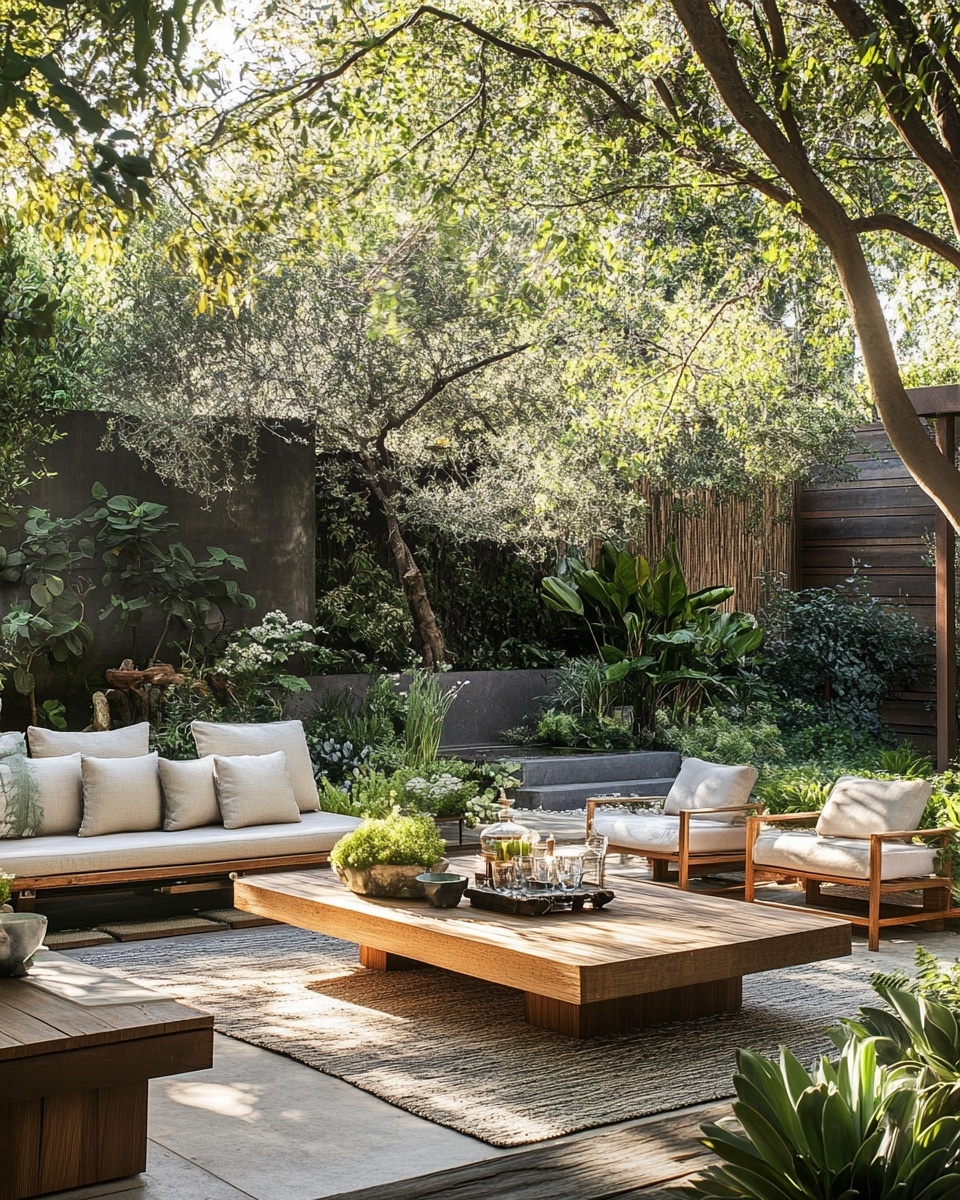## Introduction
Are you among the 75% of aspiring gardeners who feel overwhelmed by the sheer volume of information available, wondering precisely when and what to plant for a vibrant, year-round display? Many stumble at the starting gate, unsure how to move beyond sporadic planting to a truly harmonious garden. But what if there was a clear, actionable guide to unlock the secrets of a thriving personal paradise, regardless of the season? This comprehensive guide presents a meticulous seasonal gardening calendar, designed to help you cultivate not just flowers, but confidence and joy, turning your green dreams into a lush reality. We'll delve into the precise timing, optimal conditions, and expert techniques that ensure your garden flourishes from the first thaw to the deepest winter.
Tools & Materials Needed
Every successful gardener knows that the right tools are half the battle. Think of these as your garden's companions, making every task easier and more enjoyable.
- Hand Trowel & Fork: Essential for digging, planting, and loosening soil. Look for ergonomic handles to minimize hand strain.
- Gardening Gloves: Protect your hands from thorns, dirt, and blisters. Opt for breathable, water-resistant varieties.
- Pruning Shears: Crucial for shaping plants, removing dead growth, and encouraging new blooms. Bypass pruners are ideal for live stems, while anvil pruners are better for deadwood.
- Watering Can or Hose with Spray Nozzle: Consistent and gentle watering is key. A watering can is perfect for delicate seedlings, while a hose with a spray nozzle covers larger areas efficiently.
- Gardening Hoe: For weeding and preparing larger beds.
- Heavy-Duty Wheelbarrow or Garden Cart: Invaluable for transporting soil, compost, and harvested plants.
- Seeds or Starter Plants: Choose varieties suited to your local climate and sun exposure. For budget-friendly options, consider swapping seeds with fellow gardeners or collecting seeds from your own plants.
- Potting Mix/Garden Soil: A high-quality, well-draining soil is foundational. For eco-friendly alternatives, look for organic potting mixes or enrich your existing soil with homemade compost and worm castings.
- Organic Fertilizers: Think compost, aged manure, or balanced granular organic feeds. Avoid synthetic fertilizers for a more sustainable approach.
- Mulch: Straw, wood chips, or shredded leaves help retain moisture, suppress weeds, and regulate soil temperature.
- Stakes or Trellises: For supporting taller plants like climbing roses or delphiniums.
Time & Effort Overview
Gardening is a journey, not a race. Understanding the time commitment helps set realistic expectations.
- Initial Setup (Spring): Expect 1-2 full weekends for bed preparation, planting seeds/starters, and mulching. For a typical 10×10 foot flower bed, this could be 12-16 hours.
- Daily/Weekly Maintenance:
- Watering: 15-30 minutes daily during dry spells, or 30-60 minutes 2-3 times per week, especially for newly established plants.
- Weeding: 15-30 minutes a few times a week. Consistent, short bursts are more effective than infrequent, long sessions.
- Deadheading/Pruning (Flowering Season): 10-20 minutes every 2-3 days to encourage continuous blooming. This can increase bloom yield by up to 20% compared to neglected plants.
- Seasonal Tasks:
- Fertilizing: 30-60 minutes monthly or bi-monthly, depending on plant needs.
- Pest/Disease Checks: 5-10 minutes during daily walks through the garden.
- Fall Cleanup: 1-2 full weekends for preparing beds for winter, similar to spring setup.
Difficulty Level: This seasonal gardening calendar approach is designed for Beginner to Intermediate gardeners. While initial setup requires some effort, the step-by-step guidance makes ongoing maintenance manageable. Compared to intricate landscape design, which can be advanced, following a seasonal flow simplifies decision-making considerably.
Step-by-Step Gardening Process
A well-planned garden begins with a clear strategy. Follow these steps for a bloom-filled journey through your seasonal gardening calendar.
Step 1: Planning Your Seasonal Garden Layout
Before you dig, dream! Consider your sun exposure (full sun, partial shade, shade), soil type, and climate zone. Sketch out where different plants will go, keeping in mind their mature size and sun requirements. A common beginner mistake is underestimating mature plant size, leading to overcrowding. Aim for variety in bloom time to ensure continuous interest.
Step 2: Preparing Your Soil
Good soil is the foundation of a healthy garden. Dig down about 8-12 inches and amend with compost or well-rotted manure. This improves drainage, aeration, and nutrient content. A quick soil test can tell you exactly what your soil needs. Don’t worry if your soil is heavy clay or sandy; incorporating organic matter will dramatically improve its structure over time. For clay, it helps break up compaction, and for sandy soil, it improves water retention.
Step 3: Choosing the Right Plants for Each Season
This is where your seasonal gardening calendar truly comes alive. Select plants appropriate for spring, summer, fall, and even winter interest. For example, tulips and daffodils for spring, zinnias and sunflowers for summer, mums and asters for fall. Research your plant choices thoroughly – understanding their specific needs is crucial.
Step 4: Planting Seeds or Transplants
Follow packet instructions for seeds regarding depth and spacing. For transplants, dig a hole twice as wide as the root ball and just as deep. Gently remove the plant from its container, loosen any circling roots, and place it in the hole. Backfill with soil, lightly firming around the base, and water thoroughly. Here’s a tip: planting in the morning or late afternoon reduces transplant shock.
Step 5: Watering Your Garden Consistently
New plants need consistent moisture to establish their root systems. Water deeply rather than frequently, encouraging roots to grow downwards. Stick your finger into the soil; if it feels dry an inch or two down, it's time to water. Overhead watering can encourage fungal diseases, so aim for the base of the plant.
Step 6: Mulching for Success
Apply a 2-3 inch layer of mulch around your plants, keeping it a few inches away from stems. This helps suppress weeds, conserves soil moisture by reducing evaporation (saving up to 30% on water!), and moderates soil temperature. Plus, it gives your garden a polished, professional look.
Step 7: Ongoing Maintenance and Observation
Regularly check your plants for signs of pests or diseases. Early detection is key for easy treatment. Deadhead spent blooms (remove faded flowers) to encourage new flowering, and prune as needed to maintain shape and promote healthy growth. This vigilance is a major component of a successful seasonal gardening calendar.
Growth & Care Tips
Nurturing your plants extends beyond the initial planting. Consistent care ensures they thrive.
- Watering Frequency: Most flowering plants prefer consistently moist, but not waterlogged, soil. During hot summer months, this might mean daily watering, especially for plants in containers or newly planted beds. Established garden beds often require watering every 2-3 days, depending on rainfall and temperature. A good rule of thumb is to water when the top 1-2 inches of soil feel dry to the touch. Studies show that deep, infrequent watering encourages stronger root systems over shallow, frequent watering.
- Sunlight Exposure: Understanding your garden's light conditions is paramount. "Full sun" typically means 6+ hours of direct sunlight daily, "partial sun/shade" is 3-6 hours, and "full shade" is less than 3 hours. Matching plants to their ideal sun exposure is the single most critical factor for their energy production and bloom potential.
- Pruning:
- Deadheading: Removing spent flowers stimulates the plant to produce more blooms instead of diverting energy into seed production. This can extend the flowering period significantly.
- Structural Pruning: For shrubs and larger perennials, prune to maintain shape, remove crossing branches, and improve air circulation. Always use sharp, sterilized pruners.
- Fertilization: Even with rich soil, plants benefit from supplemental feeding, particularly heavy feeders like roses or petunias. Use a balanced organic fertilizer according to package directions, typically every 4-6 weeks during the growing season. A soil test every 2-3 years can pinpoint specific nutrient deficiencies.
- Pest and Disease Prevention: Healthy plants are naturally more resistant. Practice good garden hygiene: remove diseased foliage promptly, ensure good air circulation, and encourage beneficial insects. For minor infestations, try organic solutions like neem oil or insecticidal soap first.
- Weed Management: Weeds compete for water, nutrients, and sunlight. Consistent, shallow weeding is more effective than letting them get out of hand. Mulch is your best friend here, suppressing up to 70% of weed growth.
Eco-Friendly & Sustainable Alternatives
Gardening can and should be a steward of the environment. Embrace these practices for a greener garden.
- Composting: Turn kitchen scraps and yard waste into nutrient-rich "black gold" for your garden. This diverts waste from landfills and provides free, organic fertilizer. Composting reduces household waste by an average of 30%.
- Natural Fertilizers: Beyond compost, consider worm castings, bone meal, blood meal, or kelp meal. These slowly release nutrients, building healthy soil structure without chemical runoff.
- Water Conservation:
- Rain Barrels: Collect rainwater for irrigation; it's free and chlorine-free, which plants love.
- Drip Irrigation/Soaker Hoses: Deliver water directly to the root zone, minimizing evaporation and sprinkler runoff. This can reduce water usage by 50% compared to overhead sprinklers.
- Mulching: As mentioned, a thick layer of mulch dramatically reduces water loss.
- Small Space Solutions: Don't have a sprawling yard? No problem!
- Balcony Gardens: Planters, hanging baskets, and railing boxes can transform a small balcony into a blooming oasis. Check out our guide on how to start a balcony herb garden in small spaces for more ideas.
- Container Gardening: Many stunning flowers thrive in pots. Vary pot sizes and heights for visual interest.
- Vertical Gardens: Utilize wall space with vertical planters. This is particularly effective for trailing plants or creating a living wall of color. For inspiration, explore vertical balcony herb garden design ideas.
Creative Ideas & Uses
Your garden is an extension of your home and personality. Let your creativity bloom!
- Decorating with Plants: Use cut flowers from your garden to create stunning indoor arrangements. Bring potted plants indoors during colder months. Consider planting a cutting garden specifically for this purpose (see: how to grow a cut flower garden at home).
- Repurposing Garden Materials: Old wooden pallets can become vertical planters. Broken terracotta pots can be arranged as decorative accents or used for drainage. Mason jars make charming seed storage containers.
- Aesthetic Plant Combinations:
- Layering: Create depth by planting taller flowers at the back of a bed, medium-height ones in the middle, and shorter, mounding varieties at the front. This technique also ensures continuous visual interest throughout the growing season. For expert tips, see our layered flower bed design tips.
- Color Theory: Use complementary colors (e.g., violet and yellow) for vibrant contrast, or analogous colors (e.g., shades of blue, purple, and pink) for a harmonious, soothing effect.
- Texture Play: Combine plants with different leaf shapes and flower forms—fine feathery foliage next to broad, glossy leaves, or spiky blooms alongside soft, rounded ones.
- Theme Gardens: Design a "pollinator garden" with bee- and butterfly-friendly flowers, a "fragrance garden" with aromatic blooms, or even a moonlight garden with white and pale-colored flowers that glow in the evening. This personalization makes your seasonal gardening calendar truly unique.
Common Mistakes to Avoid
Even seasoned gardeners make errors, but anticipating common pitfalls can save you time and frustration.
- Overwatering: This is by far the most common killer of plants, especially for beginners. Overwatering suffocates roots, leading to root rot in over 60% of cases. Always check soil moisture before watering. Yellowing leaves are often a primary sign.
- Underestimating Sun/Shade Requirements: Planting a sun-loving perennial in deep shade or a shade-loving annual in intense sun will lead to stunted growth and poor flowering. Always read plant labels carefully.
- Ignoring Soil Health: Treating your soil as just a medium to hold plants is a mistake. Healthy soil is a living ecosystem. Neglecting to amend soil with organic matter leads to nutrient deficiencies and poor drainage.
- Planting Too Deep or Too Shallow: For most plants, planting at the same depth they were in their nursery pot is ideal. Planting too deep can suffocate the crown, while too shallow can expose roots to drying.
- Over-Fertilizing: More isn't always better. Excess fertilizer can "burn" roots, leading to plant damage or even death. Stick to recommended dosages and opt for slow-release organic options.
- Poor Spacing: Crowded plants compete for light, water, and nutrients, leading to weaker growth and increased susceptibility to diseases due to poor air circulation. Always consult mature plant sizes.
- Ignoring Pests and Diseases: A small problem can quickly become a large infestation or widespread disease if left unchecked. Regular garden patrols are crucial.
Maintenance & Storage Tips
Extending the life of your garden and its bounty through careful maintenance and proper storage.
- Long-Term Plant Health:
- Dividing Perennials: Some perennials benefit from being divided every 3-5 years, especially if they become overcrowded or their blooms dwindle. This rejuvenates the plant and provides new plants for other areas.
- Winterizing: For tender perennials or bulbs in colder climates, proper winter protection is vital. This might involve lifting bulbs for storage, applying a thick layer of mulch, or covering plants with burlap.
- Consistent Pruning (Seasonal): Beyond deadheading, understanding when to prune various shrubs and trees (e.g., after flowering for spring bloomers, in late winter for summer bloomers) is key to their health and next season's display.
- Seed Storage: If you're saving seeds from your own garden or have leftover packets, proper storage is crucial for viability. Store seeds in cool, dark, and dry conditions (e.g., an airtight container in a refrigerator). Label them clearly with the plant type and the date collected or purchased.
- Solving Common Issues:
- Yellow Leaves: Often indicates overwatering or nutrient deficiency. Check soil moisture first, then assess for specific nutrient needs.
- Poor Soil Drainage: Can be rectified by incorporating more organic matter like compost, which improves soil structure. Raised beds are also an excellent solution for persistently boggy areas.
- Pests: Identify the pest before treating. Sometimes a strong spray of water can dislodge aphids, while a neem oil solution works for many soft-bodied insects. Always start with the least toxic solution.
- Lack of Blooms: This can be due to insufficient sunlight, improper pruning, nutrient imbalance (too much nitrogen, not enough phosphorus), or simply the plant not being mature enough. Refer back to your seasonal gardening calendar for specific plant needs.
Conclusion
Embarking on a garden journey guided by a seasonal gardening calendar transforms a daunting task into a delightful and rewarding experience. From selecting the right tools and preparing your soil to nurturing your plants through every season, you now have the knowledge to cultivate a vibrant, resilient garden. Remember, gardening is about growth, not just for your plants, but for you too. Each bloom, each successful harvest, is a testament to your patience, effort, and connection with nature.
Ready to dig in? We encourage you to start planting this week and witness the magic unfold! Share your blossoming successes with us and explore our other gardening guides for further inspiration. Check out our collection of easy flowers to grow for beginners if you're just starting out, or if you're looking for continuous color, explore the best perennial flowers for continuous blooms.
FAQ
Q1: How often should I water my flower garden?
A1: The golden rule of the seasonal gardening calendar is to water when the soil is dry to the touch, usually an inch or two down. This can range from daily in hot, dry weather for new plants to every 2-3 days for established plants. Always prioritize deep, thorough watering over light, frequent sprinklings.
Q2: What's the best soil mix for flowering plants?
A2: A well-draining, nutrient-rich soil is ideal. For garden beds, amend existing soil with 2-4 inches of high-quality compost. For containers, a good organic potting mix designed for flowers works best.
Q3: How do I know which flowers are best for my climate?
A3: Determine your USDA Plant Hardiness Zone. Most seed packets and plant tags will indicate the zones in which a plant thrives. This is a crucial step in preparing your seasonal gardening calendar.
Q4: Should I fertilize my flowers, and how often?
A4: Yes, most flowering plants benefit from fertilization. Use a balanced organic fertilizer. For annuals, fertilize every 4-6 weeks during the growing season. Perennials often need less, perhaps once in spring and again mid-summer. Always follow product instructions.
Q5: What are the easiest flowers for a beginner?
A5: Many beautiful flowers are incredibly forgiving! Try marigolds, zinnias, cosmos, sunflowers, or nasturtiums from seed. For starter plants, petunias, impatiens (for shade), and pansies are excellent choices. We also have a great resource on easy flowers to grow for beginners.
Q6: How can I keep pests from eating my flowers?
A6: Healthy plants are more resistant. Encourage beneficial insects like ladybugs (they eat aphids!), practice good garden hygiene, and consider organic solutions like neem oil or insecticidal soap for targeted treatments. Regularly inspecting your plants as part of your seasonal gardening calendar helps catch issues early.
Q7: Can I grow flowers in small spaces like balconies?
A7: Absolutely! Many flowers thrive in containers. Explore options like petunias, calibrachoa, geraniums, and even compact climbing roses. Vertical gardens and hanging baskets are also fantastic for maximizing space. Take a look at how to start a balcony herb garden in small spaces for practical tips.
For more insightful gardening tips and to further cultivate your green thumb, explore these articles:
- Thinking about starting a balcony garden? Our guide on how to start a balcony herb garden in small spaces will get you started!
- If you love the idea of continuous blooms, don't miss our recommendations for the best perennial flowers for continuous blooms.
- For those with limited space, unleash your creativity with DIY flower bed ideas for small yards.
- Want to enjoy fresh flowers indoors? Learn all about how to grow a cut flower garden at home.
- Discover easy flowers to grow for beginners and watch your garden flourish with minimal effort.






